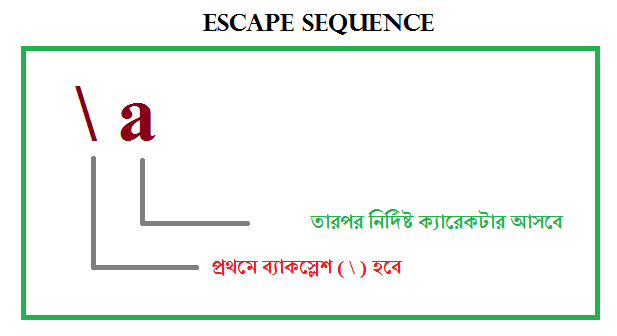

Output: Example of using the escape sequence. Let’s take an example to understand.Įxample of Octal Value: print("Example of using the \141 escape sequence.") It is represented by ‘\ooo’ where ‘ooo’ is a sequence that has 3 values each ranging from 0 to 7. There exists an escape sequence in python that can convert the octal value into a string. When the \b escape sequence is used within a string, it moves the cursor one position to the left, as a matter of fact, it erases the character that was previously present at the position.įrom the above output, we can find that the backspace escape sequence in python can be used to erase the last typed character in the string, Here, the character was c, which was erased. The \t character moves the cursor to the next tab stop, which is usually set to every eight characters by default. We wrote three print statements on each line and you can see, the output has three columns of text, with each column separated by a tab character. It is helpful in separating statements to improve the readability of string.Įxample of Tab: print("First\tSecond\tThird") TabĪ Tab equals eight whitespaces and it can be implemented by writing backslash followed up by t. The carriage will return to the start of the line at the end of the first statement and the second line will be printed in that case. It is denoted by ‘r’ followed by a backslash.Įxample Carriage Return: print("This is the first line.", end="\r") It is one of the special escape sequences in python that lets us return to the start of the line overwriting whatever was already written. The \n character is used to indicate a newline, so when you run this program, the output will be both statements separated in two lines by \n character. When you print a string that contains the newline character, the output will be split into separate lines at the position of the newline character.Įxample of Newline:- print("This is the first line.\nThis is the second line.") To go to a new line in Python, you can use the newline character \n within a string. Going to a new line is not possible by putting a bunch of pre-determined spaces in python. In Python, the backslash is used as an escape character, so if you want to print an actual backslash, you need to use a double backslash \ or a raw string with an ‘r’ prefix like r"\" 3. To use a backslash inside a string, a backslash must be written as usual before the backslash is printed.Įxample of Backslash: print(" Printed string is \\") We define a new string variable newStr and use string concatenation to join the sliced parts of the original string and the single quote.


Then, we use string slicing to insert a single quote before the word "string". In the above program, we first define a string variable string. # Insert a single quote before the word "string" To use a single quote inside a string, a backslash followed by a single quote makes it valid to be used in a statement.Įxample of Simple Quote: string = "This is a string" Some of the escape sequences that are widely used by programmers are as follows:- 1. We already discussed in the previous section about inserting a new line, similarly in python, inserting double quotes inside a string can result in an error so using a backslash before the character can make it work.
ESCAPE SEQUENCES PYTHON HOW TO
How to Use Escape SequencesĮscape sequences in python can be used by placing a backslash character and then the character that needs to be inserted.

To insert a new line, an escape sequence can be used for the same as doing the task manually can not be efficient or even possible. This article focuses on the escape sequences to color text.Escape sequences can be defined as the special characters that can be used or provided to insert characters that are not viable to be typed by the user. The text is colored on your terminal based on ANSI Escape sequences. Entering this character will print a new line in the output. A familiar example would be the \n character, which is a New Line sequence. These are special strings that modify the behavior of the terminal. How do we control the presentation of the data we're outputting to the terminal? You may have seen command-line utilities with colorful text and progress bars. It can display a moving cursor, color the text, clear the entire screen, and much more than just static output. Your Teletypewriter (TTY), or rather your terminal, is not only capable of showing the output of a program. This article shows you how to print colored output in the terminal in Python with and without libraries. In those cases, a dash of color could make a difference. There are always cases when we want to highlight output to the user, for example, a warning or error message. It's typical for CLI apps to return text in the same color of the terminal.


 0 kommentar(er)
0 kommentar(er)
